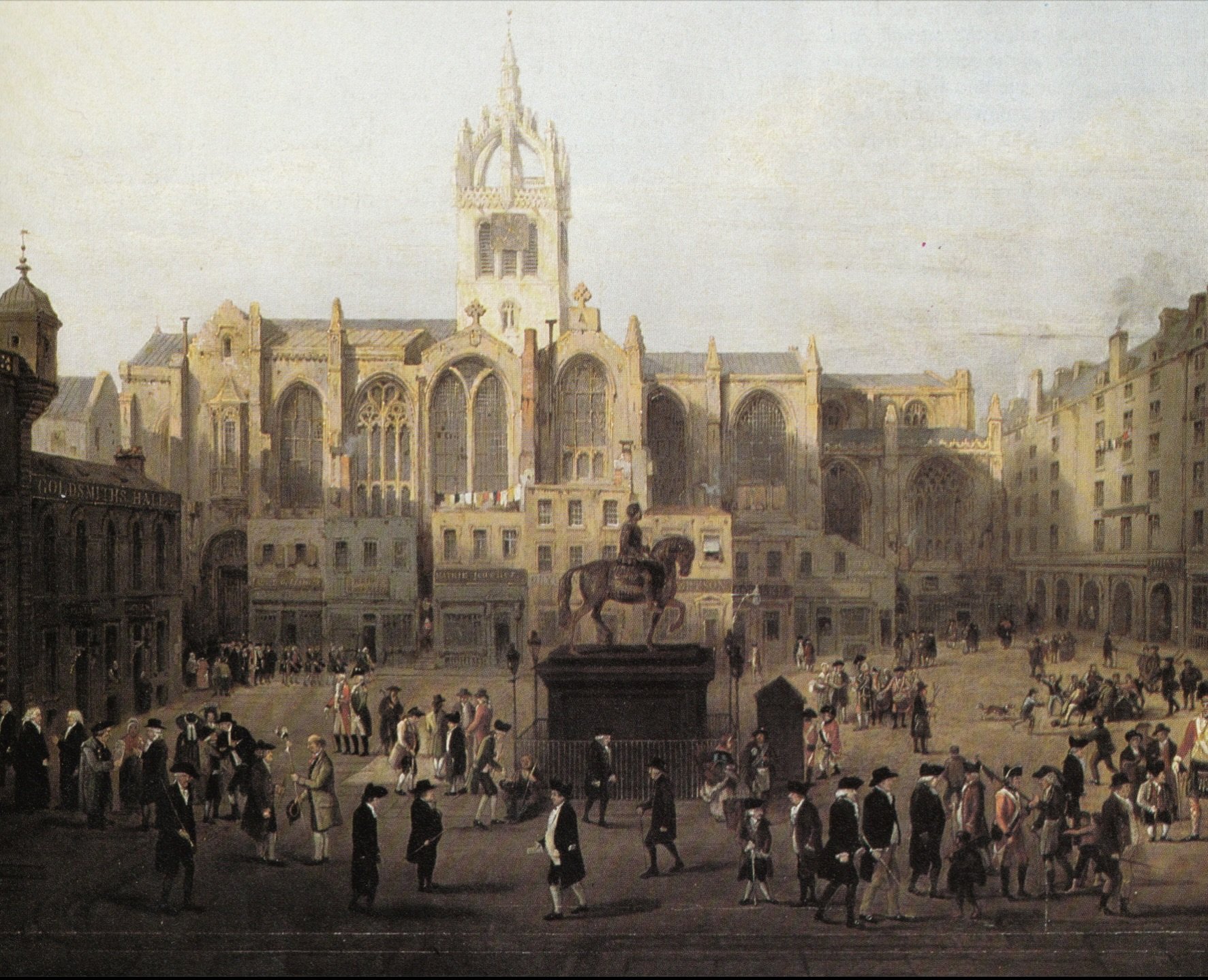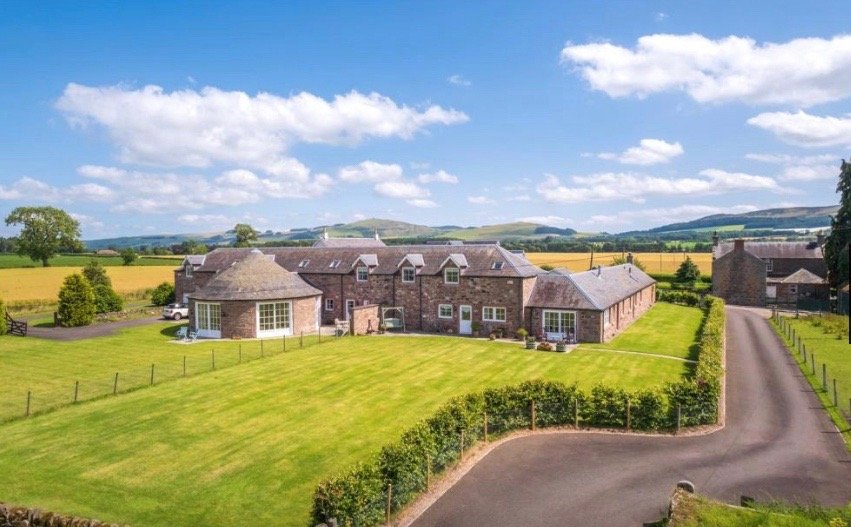History of Camno
Parliament Square, Edinburgh
(John’s Coffeehouse on far right)
On January 2 1768 this was published in the Caledonian Mercury:
To be exposed to public roup and sale, by authority of the Lords of Council and of Session, within John’s Coffeehouse, Edinburgh, upon Wednesday 6th of March next, betwixt the hours of three and five afternoon, jointly or separately as purchasers shall offer:
All and whole the Lands of CAMNO, Mill and Mill-lands thereof lying within the parish of Meigle, and county of Perth. – And all and whole the lands of ARTHURSTONE and pertinents lying within the parish of Coupar and county aforesaid.
The estates of Camno and Arthurstone lie contigue, though very distinctly marched, and each a mansion-house, office-houses, and garden, with some enclosures and other conveniences. There is a considerable quantity of thriving planting upon these lands, and some of it full grown. The situation is near the middle of Strathmore, one of the most extended and healthful countries of Great Britain: the soil is of a good quality, considerable extent, and very improvable, and the rents not raised for some time past; the whole hold of the Crown, and can make two qualifications to vote for, or be chosen a Member of Parliament.
The manor places of these lands lie within eight miles of Dundee, two of Coupar, and within a short distance of several market towns around, where plenty of all kinds of provisions may be had at a cheap rate. – For further particulars, enquire at Patrick Ogilvy, the factor and who will show the lands; or at John Smith, Writer in Edinburgh, who will show the progress, title deeds, and warrant to sell; and will likewise show any body intending to purchase, several beneficial circumstances, which will render the purchase very profitable and advantageous.
N.B. A plan and survey of the lands may be shown if required.
For the encouragement of purchasers the price will be set up very low.
John’s Coffeehouse was in the middle of the Edinburgh on the Royal Mile and a bustling place where lawyers (writers) met to discuss business and close deals. It burned down in a great fire in 1824.
In 1769 a young man of 21, John Wedderburn 1748, came to Strathmore and took a long term lease on the farm at Camno. John’s father was John Wedderburn, son of Peter Wedderburn, a merchant in Dundee.
According to THE WEDDERBURN BOOK, John senior was a student at St Andrews University when he killed another student and fled north to Aberdeen. His family were originally from Dundee and so he was starting out from scratch as a farmer.
He leased the land from the Smith family who eventually sold in it 1772. This was probably a long term lease which would have been for about twenty years and renewable. Some leases were a lot shorter but long leases enables a farmer to improve over time and reap the rewards. The absentee landlord got the rent.
There is evidence of John’s lease agreement on Scottish Indexes:
SCOTTISH INDEXES
Indexing Source Register of Deeds Minute Book (Durie)
Deed Type Disposition
Description Thomas Carnegy to John Wedderburn
Date of Recording 6 December 1769
NRS Minute Book Reference RD7/2/10 p. 331
NRS Deed Reference RD3/228
John Wedderburn and his family farmed the land for over a hundred years from 1769 to 1873.
The sale of Camno didn’t actually happen until 1772 when it was bought by Robert Ramsay who kept it for ten years.
Notice of Sale 27 Jun 1781
Owners of Camno:
Before 1772: Smith family
1772: Robert Ramsay
1783 - 1800: James Stuart-McKenzie (Lord Privy Seal)
1803: James Stuart-Wortley-Mackenzie
1818 - 1845: James Stuart-Whortley, 1st Baron Wharncliffe
!845 - c 1885 Earl of Wharncliffe
After 1885 Mary Helen Duncan (widow of Alex. Scott Duncan)
2022 view of the farm buildings at Camno (farmhouse back right)
John’s son Robert Wedderburn took over the farm when John died in 1822 then his son Robert Neil Wedderburn was the third generation at Camno. Robert Neil was only 24 when his father died in 1854.
John and Robert had big families and at some point built a farmhouse which had 11 windows (according to census data). There were lots of daughters and few sons.
Ordnance Survey map of 1863
In 1863, when Robert Neil Wedderburn supposedly fathered my great great grandmother, he was living in the big house with only one sister and his niece. He married in 1867 but didn’t have any children and died very young at the age of 42 in 1873.
His death certificate says he died of paralysis which he had for “several years”. This is likely why he started selling off cattle and farm equipment the year before his death.
Map of Camno farm
The round building with the conical roof is a horse engine barn. It’s now a lovely living room with windows looking out over the fields but at one time it was used in threshing grain - a horse was the engine and walked round and round, turning a gear that linked to a thresher.
We saw a few of these buildings when we visited Strathmore recently and didn’t know what they were until we came home and I looked it up. I knew the Wedderburns had 6 horses so I thought that maybe the building had 6 pie-shaped stalls. Wrong!




